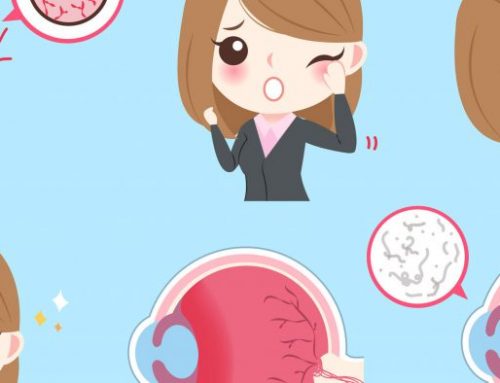Frozen shoulder affects about 3% of adults at some stage in their life. It most commonly occurs in people aged between 40 and 65 years. It is more common in women. It is more common than average in people who have diabetes and some other conditions, including overactive thyroid disease.
Either shoulder can be affected but most commonly it is the non-dominant shoulder – that is, the left shoulder in a right handed person and the right shoulder in a left-handed person. In about 1 in 5 cases the condition also develops in the other shoulder (dominant shoulder) at some stage. However one must remember that frozen shoulder is not a form of arthritis and other joints are not affected.
Frozen shoulder is also known as adhesive capsulitis or shoulder contracture. If you have frozen shoulder, the amount of movement in your shoulder joint will be reduced. In severe cases, you may not be able to move your shoulder at all.
What are the symptoms of frozen shoulder?
The typical symptoms are pain, stiffness, and limitation in the range of movement of a shoulder. The symptoms typically have three phases:
1. Phase one – the ‘freezing’, painful phase. This typically lasts 2-9 months. The first symptom is usually pain. Stiffness and limitation in movement then also gradually build up. The pain is typically worse at night and when you lie on the affected side.
2. Phase two – the ‘frozen’, stiff (or adhesive) phase. This typically lasts 4-12 months. Pain gradually eases but stiffness and limitation in movement remain and can get worse. All movements of the shoulder are affected. However, the movement most severely affected is usually rotation of the arm outwards. The muscles around the shoulder may waste a bit as they are not used.
3. Phase three – the ‘thawing’, recovery phase. This typically lasts between one and three years. The pain and stiffness gradually go and movement gradually returns to normal, or near normal.
Symptoms often interfere with everyday tasks such as driving, dressing, or sleeping. Even scratching your back, or putting your hand in a rear pocket, may become impossible. Work may be affected in some cases. There is great variation in the severity and length of symptoms. Untreated, on average the symptoms last 2-3 years in total before going. In some cases, it is much less than this. In a minority of cases, symptoms last for several years.
What causes frozen shoulder?
The cause is not clear. It is thought that some scar tissue forms in the shoulder capsule. The capsule is a thin tissue that covers and protects the shoulder joint. The scar tissue may cause the capsule to thicken, contract and limit the movement of the shoulder. The reason why the scar tissue forms is not known. Although the real cause is unclear, there are a number of things that make developing a frozen shoulder more likely. These include having:
- A shoulder injury or shoulder surgery
- Diabetes
- Dupuytren’s contracture – a condition where small lumps of thickened tissue form in the hands and fingers
- Other health conditions, such as heart disease and stroke. The diagnosis of frozen shoulder is usually made by a doctor’s examination. You may also have an X-ray or an MRI scan of your shoulder joint. These tests are usually only done if the diagnosis is not clear, to exclude another cause of your symptoms. So, many people will not actually need any tests.
When to see your GP
You should visit your GP if you have shoulder pain that limits your range of movement. A diagnosis of frozen shoulder needs to be made early so treatment for the condition can be started quickly to help prevent long-term pain and stiffness developing in your joint.
Some people with frozen shoulder may get better over a period of 18-24 months. In other cases, symptoms can persist for several years.
Studies suggest that about 50% of people with frozen shoulder continue to experience symptoms up to seven years after the condition starts. However, with appropriate treatment it is possible to shorten the period of pain.
Treatment for frozen shoulder
The aim of treatment is to keep your joint as mobile and pain free as possible while your shoulder heals. The type of treatment you receive will depend on how severe your frozen shoulder is and how far it has progressed.
Painkillers, steroid injections, shoulder exercises and physiotherapy are all possible treatment options. Surgery may be recommended if your symptoms have not improved after six months. Let us examine each of the treatment options.
Ordinary painkillers
Paracetamol may be advised first to try to control the pain. Codeine is a stronger painkiller which may be used as an alternative to, or in addition to, paracetamol. Constipation is a common side-effect from codeine. You can take ordinary painkillers in addition to other treatments.
Anti-inflammatory painkillers
Examples of anti-inflammatory painkillers include ibuprofen, diclofenac and naproxen. These drugs work by helping to ease pain and also by reducing any swelling (inflammation) in your shoulder. There are many different brands. Therefore, if one does not suit, another may be fine. Side-effects sometimes occur with anti-inflammatory painkillers. Always read the leaflet that comes with the drug packet for a full list of cautions and possible side-effects.
Shoulder exercises
These are commonly advised. The aim is to keep the shoulder from ‘stiffening up’ and to keep movement as full as possible. For most benefit, it is important to do the exercises regularly, as instructed by a doctor or physiotherapist.
Physiotherapy
Many people are referred to a physiotherapist who can give expert advice on the best exercises to use. Also, they may try other pain relieving techniques such as warm or cold temperature packs and transcutaneous electrical nerve stimulation (TENS) machines.
Steroid injection
An injection into, or near to, the shoulder joint brings good relief of symptoms for several weeks. Steroids reduce inflammation. It is not a cure, as symptoms tend to gradually return. However, many people welcome the relief that a steroid injection can bring.
Surgery
A surgery is sometimes considered if other treatments do not help. Although surgery has a good rate of success it does not help in all cases. Techniques that are used in the surgery include:
• Manipulation – this is a procedure where the shoulder is moved around by the surgeon while you are under anaesthetic.
• Arthroscopic capsular release – this is a relatively small operation done as ‘keyhole’ surgery. It is often done as a daycase procedure. In this procedure, the tight capsule of the joint is released with a special probe. Even though in pain, one must remember that it is really important to avoid immobilising your shoulder – for example, with a sling or even a plaster cast. This will actually make recovery more difficult and will take longer to improve.
Here are some exercises you can do at home to alleviate your pain:
Do these moves daily, performing 2 to 4 sets of 10-15 repetitions of each exercise. Stop if it hurts. If the symptoms increase, see your doctor.
– – – – – – – – – – – – – – – – – – – – – – – – – – – – – – – – – – – – – – – – – – – – – – – – – – – – – – – – – – – – – – – – – – – – – – – – – – – – – – – – – – – – – – – – – – – – – – – – – – – – –
Here are some exercises you can do at home to alleviate your pain:
Do these moves daily, performing 2 to 4 sets of 10-15 repetitions of each exercise. Stop if it hurts. If the symptoms increase, see your doctor.
01 The Pendulum bend
• Bend forward at the waist
• Support the body with one arm catching hold of a waist high table top
• Hold some weight in the affected arm
• Let the affected arm hand like a pendulum
• Rotate and wing the arm in circle like a pendulum
• Repeat 15 times in one direction and then in the other (clockwise and anticlockwise)
• This is one set.
02 Table crawls
• Sit in front of a table
• Place the affected limb on the table
• Crawl with the fingers as far as possible
• Hold for 5 seconds
• Return to the starting position
• Repeat 10 times
• This is one set.
03 Stick Exercise
• Lie down on your back
• Hold a wooden stick with both hands
• Bring the arms in front of the chest
• Keep the elbows absolutely straight
• Bring the arms backward over the head
• Take the stick as far back as possible
• Hold for 5 seconds
• Repeat 10 times
• This is one set.
04 Wall crawls
• Stand with the affectedshoulder towards the wall
• Place the fingers of theaffected arm on the wall
• Crawl fingers upward as faras possible
• Hold for 10 seconds
• Return to the starting position
• Repeat 10 times
• This is one set.
05 Arm lift using rope
• Take a thin rope about 15 feet long
• Pass it through a hook on the ceiling
• Catch each end in separate arms
• Pull the rope down with the arm that isnot paining
• Hold for 5 seconds
• Let the healthy arm go up so that thepainful arm comes down
• This is one set.







Leave A Comment